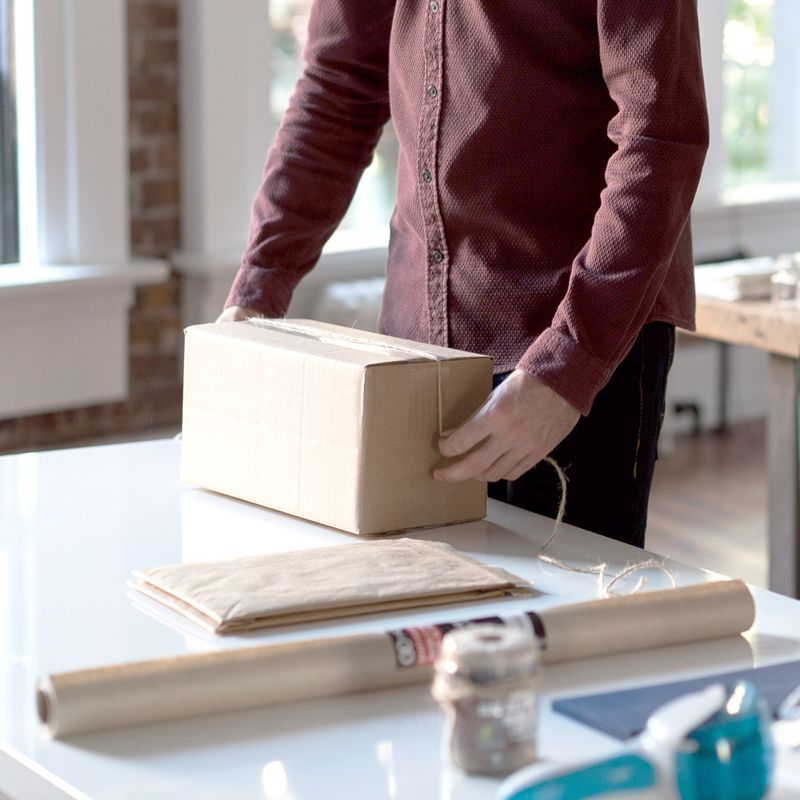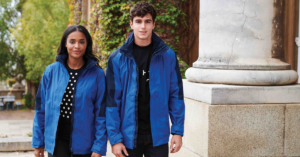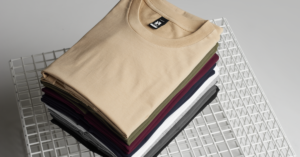Around the world, we’ve seen changes to the packaging in which we purchase our products. Whether we’re purchasing something for the home or if we’re doing our annual food shop – the packaging we use is constantly becoming less and less.
But, what you might not be aware of, is that the continued innovation into the packaging of our products actually is designed to keep our food fresher for longer, saves money and actually reduces the amount of food waste that we produce.
From scraps of food that went un-ate to the very packaging which they came in, we’re constantly chucking away reusable materials which are wasting money and also damaging the environment.
In the UK alone, households waste over 7 million tons of food each year. To top that off, we also throw 1.7 million tons of plastic packaging straight into the bin as well. Almost 50% of the total amount of food that we throw away in the UK comes from our homes which suggest that if we were more careful with our waste, we could reduce this number significantly.
It’s hoped that we can transform the image of packaging from the villain to the hero that our environment needs. How is this going to be achieved? well, designers across the world are currently trying to combat the problem by using waste food FOR packaging!
SOME INTERESTING FACTS ABOUT PACKAGING WASTE:
It’s no secret that environmental sustainability and businesses don’t always go hand in hand and this is no more true than when it comes to product packaging. Some of the most common household packing – including potato chip bags, pizza boxes, and toothpaste tubes – are often not recyclable. For the companies who are hoping to attract sustainability-minded customers, this is one of the most difficult problems that a company can face.
Even though this makes up only a small part of a product’s environmental impact, the packaging is the first thing that potential customers will see and it also plays a huge role in influencing their purchasing decisions.
Mark Dancy, president of WasteZero, a US-based waste reduction company, said in an interview with The Guardian that, while fast advancing technologies can help to boost green, eco-friendly packaging, many companies continue to make mistakes when it comes to packaging their products.
He goes on to argue that the main problem with regards to the packaging is that the majority of companies focus on only two priorities: “how will this drive consumers to my product and how does this cost?”. For some, environmental sustainability is usually the third question they ask which shows that it plays a less important role. “But realistically, most look at the first two.”
How can cheese solve our problems?
Both printing and packaging companies probably care more about the creation of new materials, such as renewably sourced plastics or waste from other industries. One possibility for new material is Whey which could lead to interesting developments in both packaging printing and the inks that are used to create the packaging.
Whey is produced as a waste product in the process of making cheese, once the protein solids have been separated out. Whey turns up in protein rich processed foods, carbonated drinks, and fertilisers. Additionally, Whey has been discovered to actually be quite good for you as it contains both protein and healthy sugars. It’s also an ingredient that has been used for a long time in baking.
Now, scientists in Italy have come up with a new method which can turn Whey into plastics thanks to the products excellent mechanical properties. This means that Whey has good prospects to be used in packaging materials and could end up replacing polyethylene which has been used for over 50 years.
Maria Beatrice Coltelli, a researcher in material science at DICI-UNIPI in the University of Pisa, uses Whey granules to create a thin plastic film which can then be layered with cardboard and aluminium to create a multilayered packaging material.
The bioplastic is easy to recycle and widely expected to eventually replace plastic film. “We have tested how simple it is to separate the layers – it’s important to recover the polyethylene, the aluminium, and most of all the fibres, which are very useful in produced recycled cardboard.” Said Marco Buchignani, head of paper quality control at Lucense in Italy.
Wait, but what about nuts?
I love Nutella, I’m pretty sure that’s something that most people would agree with. It’s a product that many families around the world will have stored in their cupboards. Nutella is produced by the world-renowned chocolate maker, Ferrero, and gets its beautiful taste from hazelnuts.
Where is this going? you might be thinking, well the Italian company is the world’s largest buyer of hazelnuts, it uses 25% of the world’s supply and makes 180 million kg’s of its Nutella spread each year, this is according to the Italian Trade Agency. As a result of this, Ferrero has plenty of hazelnut shells at their disposal.
“We have access to large amounts of residual by-products which we realised could be used constructively.” These were the words of a project co-ordinator at Ferrero in a recent interview with The Guardian. The idea is that the company can use the nuts’ natural wrapping to create packaging for its chocolates.
Ferrero isn’t working on this alone, they’ve teamed up with renewable packaging company Stora Enso and a German Research Institute to develop the ‘EcoPaper’ as part of a large £870 million project which is co-funded by the European Union.
The packaging, which is still in the experimental stage, is produced by dry-milling the hazelnut shells, then by adding them to the middle layer of triplex folding box board. Here they will fill the space which is usually occupied by virgin cellulose fibres.
With this technology, the waste materials can be up-cycled to be used in board production and won’t be considered as waste anymore, this leads to a more sustainable and economical packaging.
The short-term goal of this project is to produce packaging which has 20% hazelnut content. The long-term goal is that the technology is expected to be able to consume 50% of the available confectionary waste (including hazelnut shells and cocoa bean skins). This will result in 750,000 – 1.5 million tons of paper every year!
And what about tomato plant recycling?
Ah, the tomato.
The tomato forms the basis of many, many recipes across the globe – whether the tomato is fresh or tinned. The big question – what happens to tomato by-product waste?
Once a year, the residual flow of 87 million kg’s of tomato plants is released and composted by the growers. Now, instead of composting, it’s possible that we can turn these plants into a raw material which can by combined with old paper to process them into a solid board.
The production of this solid board takes place at the Solidus Solutions plants and it’s here that the solid board is further converted into a large variety of different packaging.
This technique will allow tomatoes to actually be packaged in their own plant fibre! Cool stuff, no?
In order to create this new packaging resource, Solidus Solutions has been collaborating for the past few years with a unique consortium of partners in the Westland region, called Bio Base Westland.
Can cocoa husks be used as packaging as well?
Chocolate packaging is a huge business. It’s designed to look attractive, shiny and grab your attention. But once you’ve eaten the delicious bar of chocolatey goodness, what happens to the packaging?
If you said “in the bin” you’d be right.
For every metric ton of dry cocoa beans produced, there are 10 tons of husks that are left over as waste. That means that there’s huge potential to create a recyclable form of packaging for every piece of chocolate that we eat!
UK packaging supplier, James Cropper, has developed bio-recyclable paper packaging which is partially made from the husks of cocoa that are supplied by Barry Callebaut. The paper contains roughly 10% cocoa husk content and then the rest of the packaging is made up of unbleached cellulose fibre.
James Cropper produces the paper packaging at its own facilities using the cocoa husks which are provided by Barry Callebaut, which previously approached James Cropper in order to find an environmentally sustainable solution for its cocoa waste.
What can we do now?
So, as we can see, there are many technological solutions to agri-food waste which already exists and only needs to be more effectively shared and adopted in an affordable way to local contexts.
The EU has outlined ambitious plans for 75% of all packaging waste to be recycled by 2030. Of course, the smaller businesses today most likely won’t be able to afford to invest in innovative designs, but we can all take certain steps to help reduce our own carbon footprints and the carbon footprints of our companies no matter what your budget is.
Overall, the big change is for the manufacturers to develop alternative forms of packaging to replace the current ones that are bad for the environment due to them being made from materials that are not sustainable, and can’t be very easily modified to be made more sustainable.
As a T-Shirt printing company, we’re taking our own steps to become more eco-friendly and sustainable by introducing eco-friendly inks and also T Shirts that are made by recycled items and are more environmentally friendly.
As we head into a more sustainable and eco-friendly world, it’s important to remain ahead of the curve and do what we can to preserve the environment for future generations.





